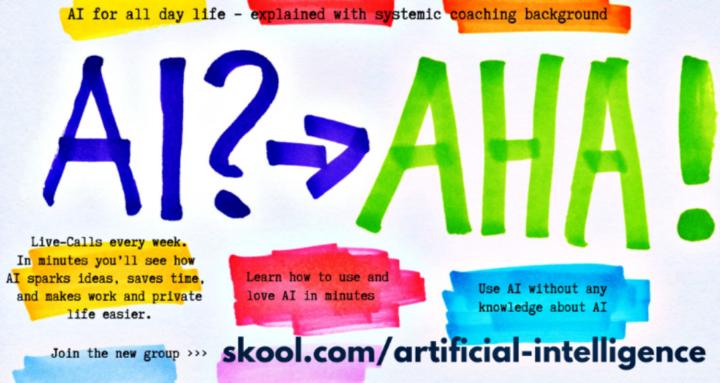7d • Human-Centered AI
Safety and Guardrails in Narrow AI Systems
Safety and Guardrails in Narrow AI Systems:
Narrow AI systems, while focused and high-performing within their domain, can still produce unsafe, biased, or unpredictable outputs. Guardrails are design patterns and enforcement mechanisms that limit what an AI system can do — not just technically, but ethically and operationally. These include filtering harmful content, rejecting out-of-bounds queries, constraining model behavior, and escalating edge cases for human review. Safety isn’t a single model property but an emergent outcome shaped by training data, architecture choices, deployment context, and human oversight.
Explained for People without AI-Background
- Guardrails are like safety rails on a highway — they prevent the AI from going off course.
- They block inappropriate or dangerous responses and involve a human when needed.
Input Filtering and Access Control
- Prompt Sanitization – Detect and reject inputs that include dangerous, malicious, or manipulative language.
- Contextual Awareness – Refuse to answer in risky contexts (e.g., medical, financial) without disclaimers.
- Access Boundaries – Restrict models from invoking unauthorized tools, files, or APIs.
- Shadow Prompts – Internal system prompts define behavioral constraints invisible to the user.
Output Filtering and Post-Processing
- Toxicity Detection – Use classifiers to remove hate speech, slurs, or offensive phrasing.
- Privacy Scrubbing – Detect and redact PII like phone numbers, emails, or sensitive details.
- Bias Mitigation – Rephrase outputs that reinforce harmful stereotypes or one-sided perspectives.
- Response Shaping – Add disclaimers, soften absolutes, or adjust tone to suit audience and context.
Escalation and Human-In-The-Loop Design
- Confidence Thresholds – Suppress outputs when the model is unsure or the answer is ambiguous.
- Human Escalation – Route flagged cases to human operators or reviewers in enterprise systems.
- Feedback Loops – User ratings, edits, or reports influence model retraining or filtering logic.
- Logging and Traceability – Record interactions to support audits, bug reports, or compliance.
Training Data Curation and Reinforcement
- Pretraining Hygiene – Remove harmful, violent, or polarizing data before model training.
- Synthetic Tuning – Generate counterexamples to teach safer behavior during instruction tuning.
- RLHF and Constitutional AI – Reinforce human-aligned preferences using structured feedback or rulebooks.
- Dataset Audits – Regularly review fine-tuning datasets for safety violations or regressions.
System Monitoring and Incident Response
- Real-Time Logging – Monitor model outputs in production for sudden drift or unsafe replies.
- Canary Prompts – Periodically test behavior with adversarial or edge-case inputs.
- Incident Triage – Define criteria for escalation severity and required human intervention.
- Red Teaming – Simulate attacks or misuse attempts to stress test model and platform integrity.
Compliance and Organizational Policy
- Alignment With Standards – Follow NIST, ISO, or company-specific AI safety guidelines.
- Regional Legislation – Adhere to laws like the EU AI Act or GDPR where applicable.
- Policy Enforcement – Define what AI can and cannot do in specific deployments or use cases.
- Explainability – Ensure users and regulators can understand why an output was given or denied.
Interface and Experience Design
- Safety UX – Display cues like safety badges, refusal notices, or human override buttons.
- User Education – Help users understand model boundaries and limitations.
- Consent and Control – Let users configure assistant boundaries, sensitivity levels, or escalation triggers.
- Transparency Reporting – Show what filters or overrides were applied to an output.
Known Limitations and Remaining Challenges
- Context Sensitivity – Some filters fail to distinguish sarcasm, idioms, or coded language.
- Overblocking – Safety mechanisms may suppress helpful or non-harmful replies.
- Cultural Variation – What is considered offensive or unsafe varies across languages and regions.
- Dynamic Attacks – Jailbreak prompts and adversarial phrasing can still bypass protections.
Related Concepts You’ll Learn Next in this Artificial Intelligence Skool-Community
- Human In The Loop AI Systems
- Adversarial Robustness And Red Teaming
- AI Policy, Compliance, and Governance
Internal Reference
Narrow AI – ANI
1
0 comments

skool.com/artificial-intelligence
Artificial Intelligence (AI): Machine Learning, Deep Learning, Natural Language Processing NLP, Computer Vision, ANI, AGI, ASI, Human in the loop, SEO
Powered by



